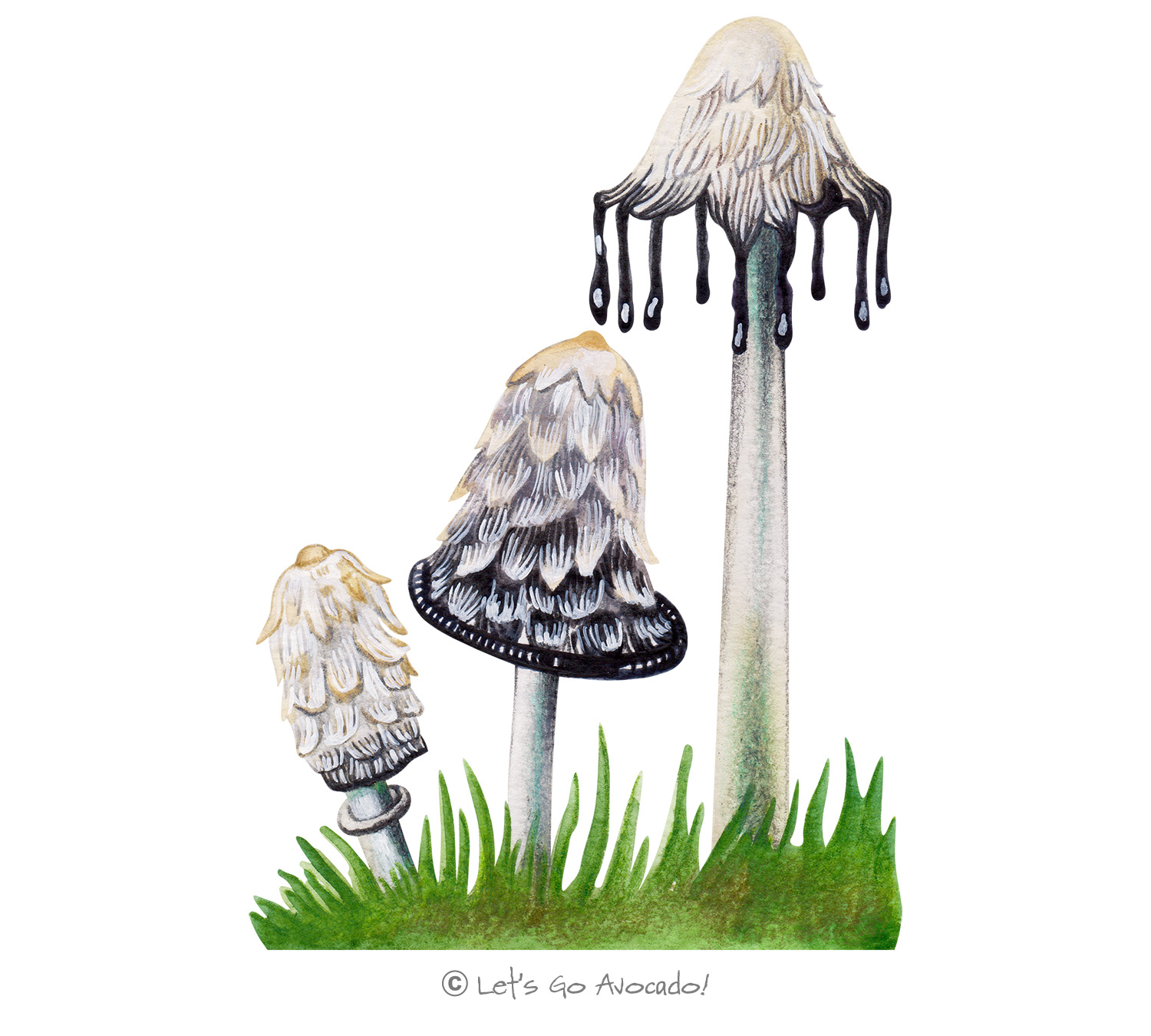

Shaggy Mane
Lawyer's Wig, Inky Cap
Coprinus comatus
This page may contain affiliate links.
Read our disclosure and privacy policy here.
The Shaggy Mane mushroom is a fascinating and easily recognizable fungi due to its tall, cylindrical shape and the characteristic “shaggy” appearance of its cap. As it matures, the cap liquefies in a process called deliquescence, creating a scene that’s unique among mushrooms.
Shaggy Mane
Common Name
Shaggy Mane
Other Names
Lawyer’s Wig, Inky Cap
Latin Name
Coprinus comatus
Distribution
Shaggy Mane mushrooms can be found across North America, Europe, and many other parts of the world, often in urban areas as well as forests.
Appearance
The cap is white with scales that give it a “shaggy” appearance. As it matures, the edges of the cap begin to turn black and liquefy, producing an inky substance (hence the alternate name “Inky Cap”). The gills beneath the cap also turn black and liquefy.
Size
Typically, the mushroom stands between 10-40 cm tall.
Habitat
Found in grassy areas, roadsides, and meadows. They often appear in urban settings, such as lawns or parks.
Diet
Saprobic; it obtains nutrients from decomposing organic matter in the soil.
Lifecycle
The Shaggy Mane reproduces through spores. These spores are released from the gills as they deliquesce, and when conditions are right, the spores will germinate and grow into new mushrooms. The entire lifecycle, from the emergence of the mushroom to its deliquescence, can occur in just a few days.
Defense Mechanisms
The rapid deliquescence can be considered a type of defense mechanism. By turning into an inky liquid, it prevents many animals from eating it. Also, like many fungi, it might contain compounds that are unpalatable or mildly toxic to some animals, though it’s edible for humans when young and before it starts to turn inky.
Ecological Importance
As a saprobic mushroom, the Shaggy Mane helps break down organic matter, contributing to soil health by recycling nutrients and aiding decompositionDecomposition is a natural process that happens when living things, like plants, animals, or other organic matter, break down into simpler substances. It is a part of the circle of life and plays an essential role in recycling nutrients back into the environment. Learn More processes.
ConservationThe act of protecting and preserving natural resources and the environment. Conservation efforts are important to protect beavers and their habitats. Status
Not of concern; it’s generally considered common in its habitats.

There’s a lot to explore right where we are, in our own neighborhoods and backyards! Join us while we get off the couch and explore the everyday wonders of nature, science, space, engineering, art, and anything else we stumble upon during on our adventures.







